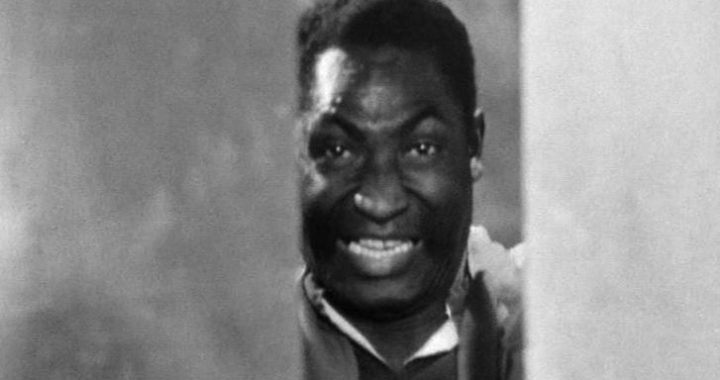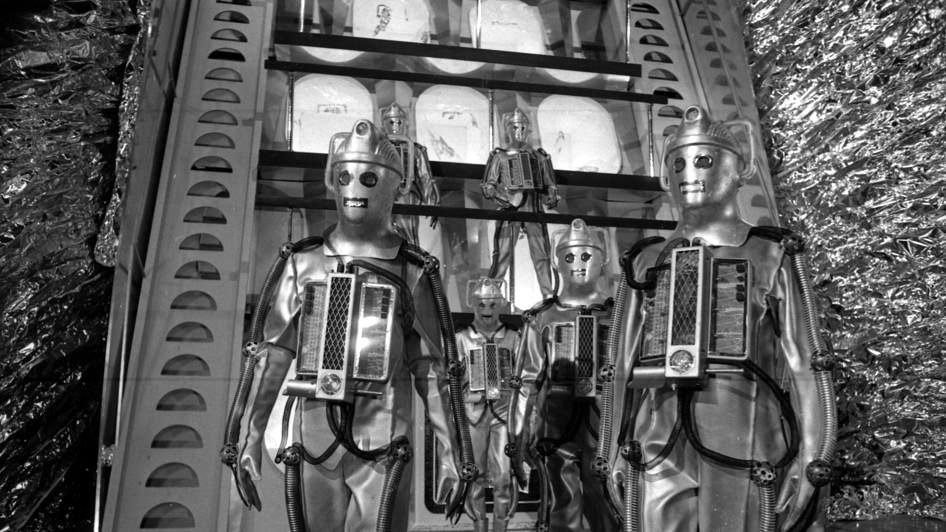In 1967, the third Doctor Who story to feature the Cybermen reintroduced the silver giants as a defeated race awaiting their eventual revival and subsequent victory over the universe. As an episode of the Doctor’s travels throughout time and space, it was certainly an eventful one, but also one which at the time introduced some interesting concepts to the series.
Although time travel was a key tenet of the concept of Doctor Who, up until Tomb of the Cybermen it was rarely used to visit the wealth of Galactic species in various stages of their history, save for mankind himself and the Daleks. With the Doctor’s third meeting with the Cybermen, this was about to change. In the years that followed we would revisit several of the shows successes such as the Ice Warriors, the Autons, the concept of living Earth Reptiles (Silurians, Sea Devils), the affairs of the planet Peladon and the campaigns of the Sontarans.
Not only that, but we are also given one of the most thrilling groups of characters in the series yet: the power mad Klieg, the edgy femme fatale Kaftan, and the faithful mute Toberman. Along with the Doctor, Jamie and Victoria these three characters are threatened with the true horror of the Cybermen – but where the Doctor would defeat the menace from Mondas, the three rogue humans are interested only in controlling the giants.
Gerry Davis and Dr. Kit Pedler, creators of the Cybermen, had earlier shied away from presenting the true horror of Cybernisation at the hands of the mankind’s twin. In Tomb of the Cybermen, they have a specially created character whose entire purpose is to be the Cybermen’s latest recruit. By calling him Toberman, the writers give a clue as to his fate that somehow remains clouded until it is too late for him. The conversion process from Toberman to Cyberman may appear to be similar at first glance to that of man to Dalek Roboman, but this is far worse. The removal of limbs, organs and emotions while retaining the subject’s brain is far worse than the mental cybernetic control enforced by the Daleks in some stories.

This body horror, however, had far-reaching consequences in Doctor Who. Over the following 15 years we would see the Doctor rapidly aged (The Leisure Hive), threatened with a compost-making machine and be witness to two men being slowly converted into sentient vegetation (The Seeds of Doom), watch as Jamie’s face is broken up and then repaired incorrectly (The Mind Robber), and witness several mutations from man to monster (Inferno, Terror of the Zygons) before the show’s tone was lightened; prior to this threats from the monsters had only been suggested at or seen off-screen. In 1966 we had a human cadaver stumbling around the tomb on Telos. Nightmares were born.
What Tomb also gives us is the introduction of a chief Cyberman, or Cybercontroller. This is ostensibly a good idea, one which introduces the concept of hierarchy into the ranks of these merciless monsters and provides a focal point for any interaction between the Doctor and the aliens. But isn’t the concept of rank related to pride? And isn’t pride an emotion? Over the subsequent years, the role of Cybercontroller, and later Cyber Leader, would take on even greater significance, and demote the remaining troops to nothing more than stooges. It is the same accusation levelled at Terry Nation in his reuse of Davros in 1979’s Destiny of the Daleks and various repeat performances since, although in the case of the Cybermen, the effect doesn’t create such a contrast between the leader and his fellow monsters.
Doctor Who lore was further enriched when Tomb of the Cybermen revealed Telos as the home of the Cybermen. Only months before Mondas, Earth’s twin planet was revealed as home to the habitual transplanters, and we saw it destroyed. This latest instalment calmly and without fuss identified a new planet for the Cybermen to operate from, one which was free from the 1960s alternative science theory of Earth having a twin (a theme later investigated in the 1969 movie Doppelganger, starring Ed Bishop).
The Cybermen’s design was also strengthened, and never again looked as defined as it did in this story. Following the cyborg-vagrant look of The Tenth Planet and The Moonbase, these futuristic Cybermen possessed a look which naturally drew from the previous costume designs yet were sufficiently alien and futuristic enough to become the most iconic look for the monsters.
Tomb of the Cybermen occurred slap bang in the period of Doctor Who affectionately known as “The Monster Era”. During this era basically Troughton’s entire innings) each story pitted the Time Lord and his friends against a different monstrosity. No historical adventures here. The Cybermen had become the series’ second most popular villain; not only did the Doctor encounter them in this season opener he would face them again at the end of Season 5 in The Wheel in Space.
The story of Tomb of the Cybermen’s influence on the shape of Doctor Who would appear to end there. However, like many Doctor Who episodes from the mid to late 1960s, the BBC’s broadcast tapes of Tomb of the Cybermen were erased in the 1970s. The serial, along with many others, had been sold overseas and throughout the 1980s it was considered lost forever.
But in 1992, a complete copy was returned to the BBC by a television company in Hong Kong. Over the years the serial had attained a mythical status – yet here it was to be viewed once more. It disappointed few, and thrilled many.
The shape of Doctor Who has been forged by writers, actors and budgets and cultural icons. Let us never forget that events that have nothing to do with the show – such as the BBC’s video tape erasing programme – have also shaped our favourite programme. We were lucky with Tomb of the Cybermen – many more serials are incomplete and will probably stay that way.

